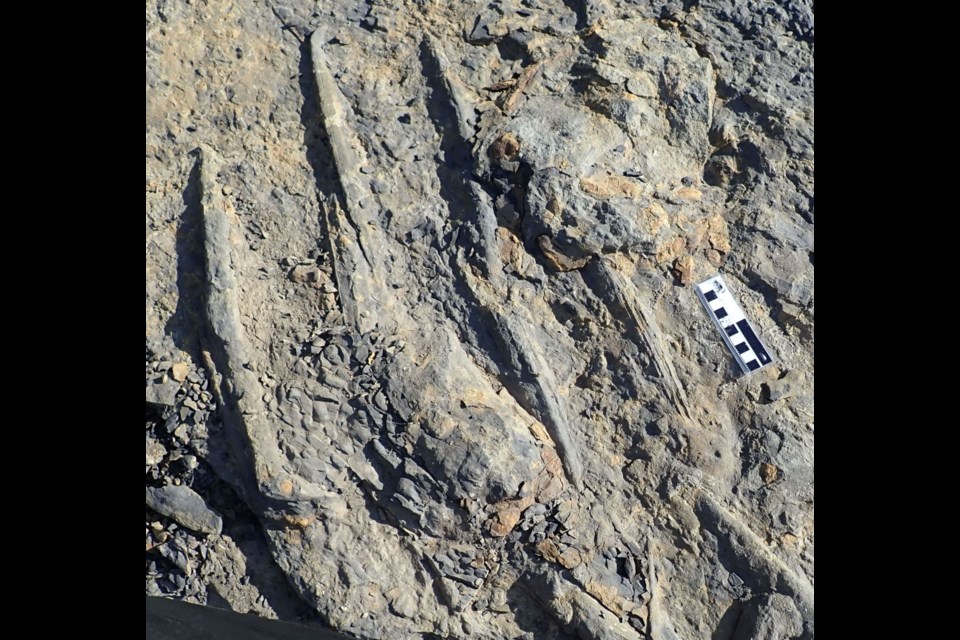One foot in front of the other – ancient crocodilian swim traces in Tumbler Ridge are paving the way for research into trackways and fossils found in the area, with an article recently published in the international journal Historical Biology.
The journal article is a collaboration between Dr. Charles Helm of the Tumbler Ridge Museum, Guy Plint with University of Western Ontario Faculty of Science, Earth Sciences, and Martin Lockley with the University of Colorado, Dinosaur Tracks Museum.
According to a March 10 press release from the Tumbler Ridge Museum Foundation, the traces are from the Dunvegan Formation of the Cretaceous Period, roughly 95 to 97 million years old.
“The large swim traces may represent a precursor to Deinosuchus, found in the fossil record from the U.S.A. and Mexico, but the northern BC crocodiles are older by at least 13 million years,” states the Museum Foundation.
It goes on to note that the crocodiles in Tumbler Ridge were between nine to 12 metres in length, much larger than the living crocodiles of today, which have only reached records of six metres.
“While the Tumbler Ridge area has become well known for its dinosaurs, there is something special about crocodiles,” writes Helm. “They did not become extinct at the end of the Cretaceous, but have ‘survivor status’, and are still with us today with a recognizably similar body plan.”
Bipedal grazing dinosaur tracks, ancient turtle swim traces, and ankylosaur tracks have also been identified in Tumbler Ridge, thanks to the continued research and work of volunteers.



